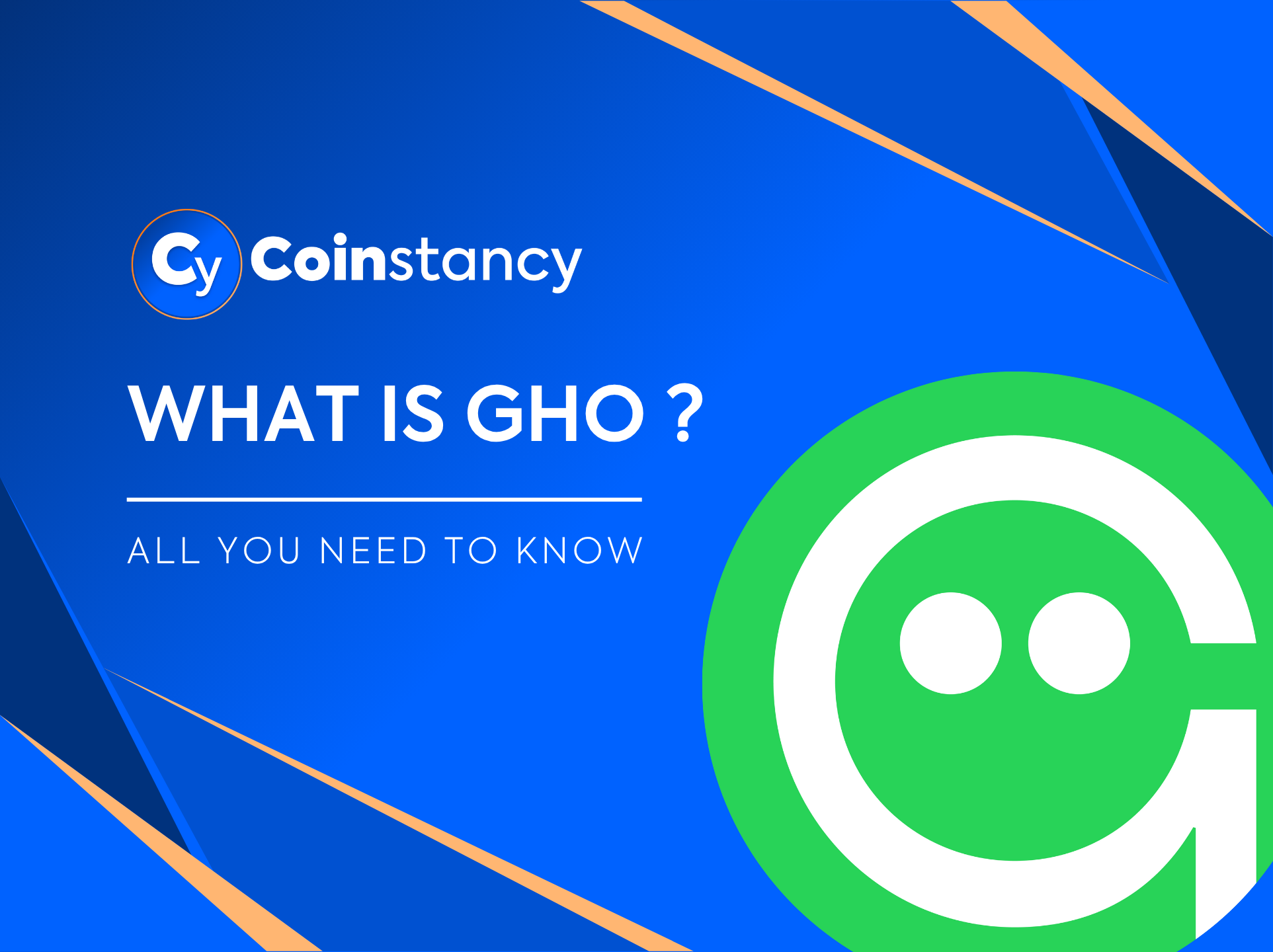
What is GHO ?
🇺🇸 American English version
🪙 GHO: Aave’s native stablecoin built for DeFi
In the expanding world of stablecoins, GHO stands out as a newcomer with strong foundations. Created by Aave, one of the most trusted DeFi protocols, this decentralized dollar aims to combine price stability, transparency, and governance—without sacrificing security. 🔒
Get the best returns on Coinstancy.
Sign up for free in just a few clicks.
🔍 What is GHO exactly?
GHO is a stablecoin pegged to the U.S. dollar (1 GHO = $1), minted directly on Aave by users who deposit crypto assets as collateral. Unlike centralized stablecoins like USDC, GHO is fully native to DeFi. It doesn’t rely on banks or third parties—just smart contracts.
To mint GHO, users deposit assets like ETH or stETH into the Aave protocol. This process works like a crypto loan, where the GHO minted is backed by an overcollateralized position. Everything is handled autonomously and transparently.
The goal is clear: make GHO the default decentralized dollar within the Aave ecosystem and beyond.
⚙️ Stability backed by overcollateralization
GHO maintains its peg through Aave’s trusted overcollateralization model. Every GHO in circulation is backed by more than its dollar value in crypto. If markets crash, positions are automatically liquidated to protect the peg.
The protocol introduces facilitators—approved modules that can mint or burn GHO depending on market conditions. This dynamic system helps GHO stay stable without depending on a central issuer.
All decisions around GHO parameters (interest rates, collateral types, issuance limits) are made by Aave’s DAO, reinforcing its community-first design.
🚀 Why GHO is useful for DeFi users
GHO goes beyond just being a digital dollar. It offers real benefits for DeFi users:
- Unlock liquidity from collateral without selling productive assets.
- Stay on-chain with no need to convert to fiat.
- Access low borrowing rates within Aave.
- Participate in decentralized governance through the DAO.
It’s a powerful tool for anyone building or managing strategies in the DeFi space.
🧠 How GHO compares to USDC, USDT, and DAI
Unlike USDC or USDT, which are issued by private companies, GHO is fully governed by code and the Aave community. It’s decentralized by design, with transparent issuance and no single point of failure.
Compared to DAI, GHO is more integrated. It’s native to Aave, making it the go-to stablecoin for borrowing, yield optimization, and storing value within that ecosystem.
It’s also multichain-ready, launching progressively on multiple EVM-compatible networks to ensure scalability and liquidity.
🛡️ Security and transparency at its core
Security is a priority at Aave, and GHO follows the same path. The protocol is audited, open-source, and equipped with tried-and-tested liquidation systems. Each GHO token is traceable and backed on-chain.
Community governance ensures that no central party controls the protocol. Interest rates, collateral rules, and issuance policies are voted on by AAVE token holders—ensuring decentralization remains real.
Get the best returns on Coinstancy.
Sign up for free in just a few clicks.
🧩 Why Coinstancy is watching GHO closely
At Coinstancy, we believe GHO could become a flagship stablecoin for DeFi users, especially in Europe. Its decentralized model, multichain strategy, and tight Aave integration make it a strong candidate for:
- Stablecoin savings pools;
- Lending and staking opportunities;
- Yield-optimized DeFi products.
We’re monitoring its growth closely, with plans to add GHO to our platform once adoption hits a meaningful threshold.